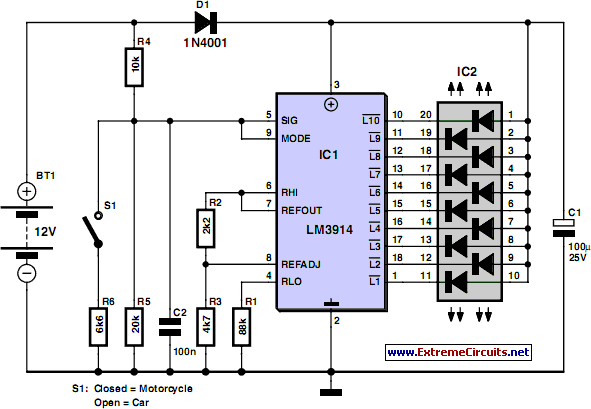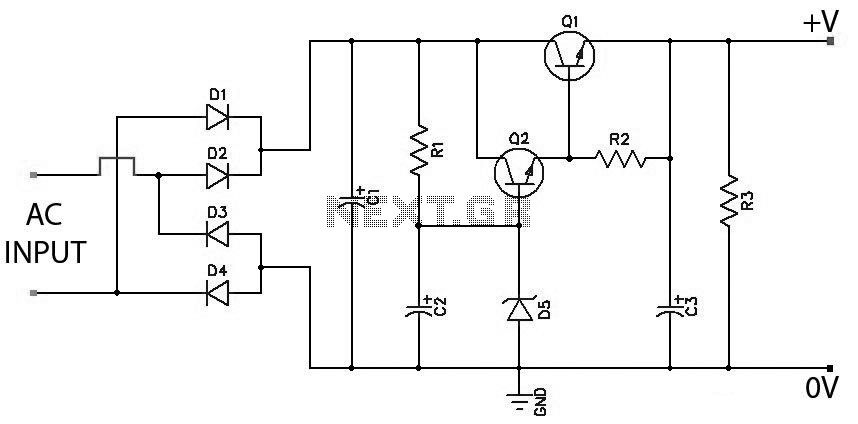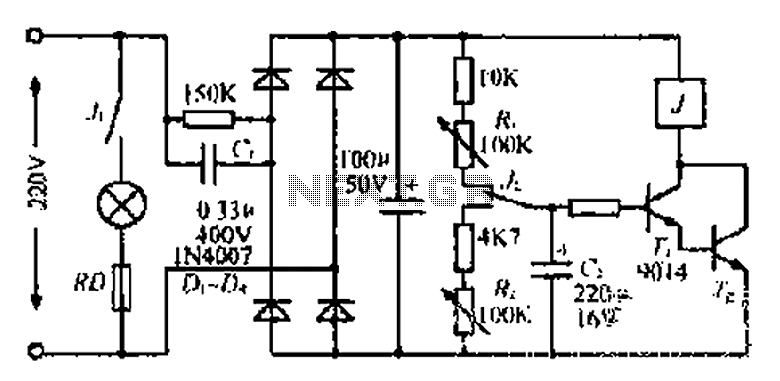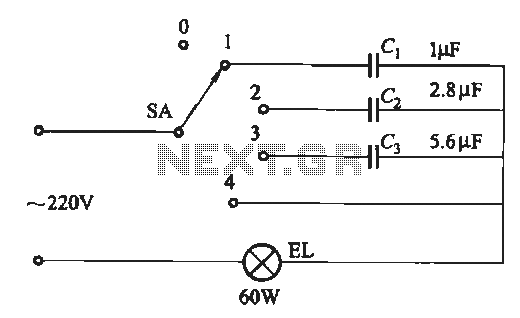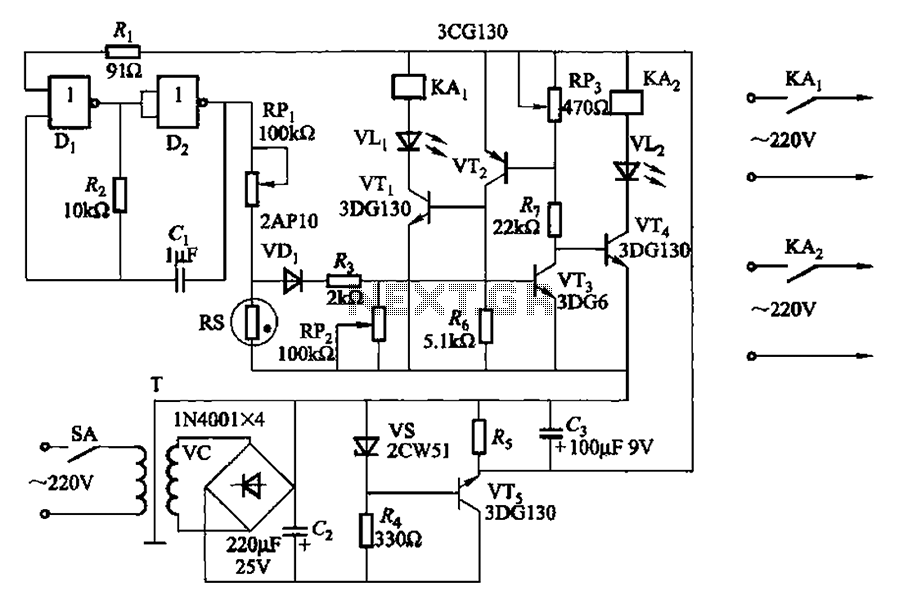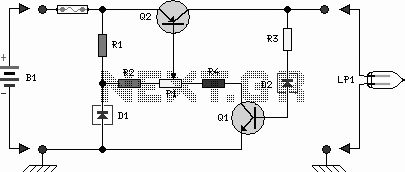
Dancing LEDs Circuit
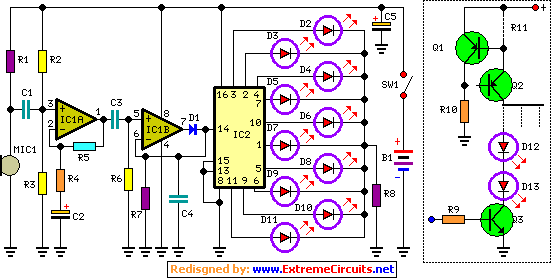
The basic circuit illuminates up to ten LEDs in sequence, following the rhythm of music or speech picked up by a small microphone. The expanded version can drive up to ten strips, formed by up to five LEDs each, at a 9V supply. IC1A amplifies the audio signal picked up by the microphone by approximately 100 times and drives IC1B, which acts as a peak-voltage detector. The output peaks of IC1B are synchronous with the peaks of the input signal and clock IC2, a ring decade counter capable of driving up to ten LEDs in sequence.
The circuit operates by capturing audio signals through a microphone, which is then amplified by operational amplifier IC1A. This amplification is crucial as it ensures that even low-level audio signals can effectively trigger the subsequent stages of the circuit. The amplified audio signal is fed into IC1B, which is configured as a peak detector. This component extracts the peak values of the incoming audio signal, converting them into a series of voltage pulses that correspond to the rhythm of the sound.
The output from IC1B is connected to IC2, a ring decade counter. This integrated circuit is designed to count pulses and can effectively drive a maximum of ten output lines, each connected to an LED. As the audio signal fluctuates, the peak detector generates pulses that increment the counter. Consequently, the LEDs are illuminated in sequence, creating a visual representation of the audio rhythm.
In the expanded version of the circuit, multiple strips of LEDs can be utilized, with each strip consisting of up to five LEDs. This configuration allows for a more extensive visual display while still operating on a 9V power supply. The design ensures that the power requirements are met without overloading any components, maintaining reliability and efficiency.
Overall, this circuit serves as an engaging visual aid that synchronizes LED illumination with audio input, making it suitable for various applications, including music visualization, interactive displays, and educational projects.The basic circuit illuminates up to ten LEDs in sequence, following the rhythm of music or speech picked-up by a small microphone. The expanded version can drive up to ten strips, formed by up to five LEDs each, at 9V supply. IC1A amplifies about 100 times the audio signal picked-up by the microphone and drives IC1B acting as peak-voltage detector.
Its output peaks are synchronous with the peaks of the input signal and clock IC2, a ring decade counter capable of driving up to ten LEDs in sequence.. 🔗 External reference
The circuit operates by capturing audio signals through a microphone, which is then amplified by operational amplifier IC1A. This amplification is crucial as it ensures that even low-level audio signals can effectively trigger the subsequent stages of the circuit. The amplified audio signal is fed into IC1B, which is configured as a peak detector. This component extracts the peak values of the incoming audio signal, converting them into a series of voltage pulses that correspond to the rhythm of the sound.
The output from IC1B is connected to IC2, a ring decade counter. This integrated circuit is designed to count pulses and can effectively drive a maximum of ten output lines, each connected to an LED. As the audio signal fluctuates, the peak detector generates pulses that increment the counter. Consequently, the LEDs are illuminated in sequence, creating a visual representation of the audio rhythm.
In the expanded version of the circuit, multiple strips of LEDs can be utilized, with each strip consisting of up to five LEDs. This configuration allows for a more extensive visual display while still operating on a 9V power supply. The design ensures that the power requirements are met without overloading any components, maintaining reliability and efficiency.
Overall, this circuit serves as an engaging visual aid that synchronizes LED illumination with audio input, making it suitable for various applications, including music visualization, interactive displays, and educational projects.The basic circuit illuminates up to ten LEDs in sequence, following the rhythm of music or speech picked-up by a small microphone. The expanded version can drive up to ten strips, formed by up to five LEDs each, at 9V supply. IC1A amplifies about 100 times the audio signal picked-up by the microphone and drives IC1B acting as peak-voltage detector.
Its output peaks are synchronous with the peaks of the input signal and clock IC2, a ring decade counter capable of driving up to ten LEDs in sequence.. 🔗 External reference
